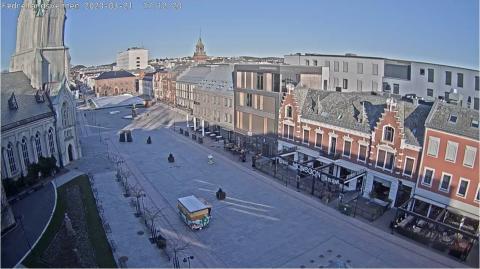The Sognefjord (Norwegian: Sognefjorden) in the Fylke Vestland in western Noway is nicknamed the King of the Fjords (Norwegian: Fjordenes konge) for a good reason: it is the longest (205 km) and at the same time the deepest (1303 m) fjord in Europe and thus in second place worldwide (after the Kangertittivaq in Greenland). It branches out into many smaller side arms, such as the Aurlandsfjord, the Lustrafjord or the Nærøyfjord (the narrowest fjord in Europe).
Its western end is about 80 km north of Bergen at Sygnefest, its eastern end is Årdalstangen (on the Årdalsfjord). The furthest by water from the open sea is Skjolden at the northern end of the Lustrafjord.
The fjord gives its name to the surrounding district of Sogn. The name is related to Norwegian word súg- "to suck", presumably from the surge or suction of the tidal currents at the mouth of the fjord.
The landscape along the fjord, except near the outer coastline, has the character of high low mountains with transition to high mountains. Along two thirds of the main fjord and most of its branches, altitudes of over 1000 m above sea level are reached. The high elevations are above the tree line. The slopes are mostly forested, but in some places the shore is formed by high cliffs of dark rock.
The inner part of the fjord lies on the lee side of high mountains like Breheimen (with the glacier Jostedalsbreen). Therefore, there is a clear difference in climate between a distinct maritime climate at the mouth of the fjord and a more continental climate at the inner end of the fjord and its side arms. In front of the mouth of the fjord lies a rocky sill under the water, which allows only the warm surface water of the Gulf Stream to flow into the fjord from the North Sea. As a result, the climate is generally mild and allows extensive fruit growing, especially on the north shore.
There are stave churches in four towns on the shore of the Sognefjord, Urnes has the oldest preserved one, another one in Kaupanger. Even more significant is the stave church of Borgund, 30 kilometers upstream from the fjord harbor Lærdalsøyri. The smallest stave church in Scandinavia (with about 40 seats) is Undredal Stave Church. Hopperstad Stave Church in the municipality of Vik is also one of the very early places of worship in the region.
Other towns along the fjord include Balestrand, Vadheim, Høyanger, Vik, Leikanger, Gudvangen, Aurland, Flåm, Sogndal, Kaupanger, Lærdal, Hafslo, Marifjøra and Skjolden.
English title: Sognefjord Cruise from Flåm to Bergen | Sognefjord in a Nutshell | Trip to Bergen, Norway 2022
#sognefjord #flåm #norway
Its western end is about 80 km north of Bergen at Sygnefest, its eastern end is Årdalstangen (on the Årdalsfjord). The furthest by water from the open sea is Skjolden at the northern end of the Lustrafjord.
The fjord gives its name to the surrounding district of Sogn. The name is related to Norwegian word súg- "to suck", presumably from the surge or suction of the tidal currents at the mouth of the fjord.
The landscape along the fjord, except near the outer coastline, has the character of high low mountains with transition to high mountains. Along two thirds of the main fjord and most of its branches, altitudes of over 1000 m above sea level are reached. The high elevations are above the tree line. The slopes are mostly forested, but in some places the shore is formed by high cliffs of dark rock.
The inner part of the fjord lies on the lee side of high mountains like Breheimen (with the glacier Jostedalsbreen). Therefore, there is a clear difference in climate between a distinct maritime climate at the mouth of the fjord and a more continental climate at the inner end of the fjord and its side arms. In front of the mouth of the fjord lies a rocky sill under the water, which allows only the warm surface water of the Gulf Stream to flow into the fjord from the North Sea. As a result, the climate is generally mild and allows extensive fruit growing, especially on the north shore.
There are stave churches in four towns on the shore of the Sognefjord, Urnes has the oldest preserved one, another one in Kaupanger. Even more significant is the stave church of Borgund, 30 kilometers upstream from the fjord harbor Lærdalsøyri. The smallest stave church in Scandinavia (with about 40 seats) is Undredal Stave Church. Hopperstad Stave Church in the municipality of Vik is also one of the very early places of worship in the region.
Other towns along the fjord include Balestrand, Vadheim, Høyanger, Vik, Leikanger, Gudvangen, Aurland, Flåm, Sogndal, Kaupanger, Lærdal, Hafslo, Marifjøra and Skjolden.
English title: Sognefjord Cruise from Flåm to Bergen | Sognefjord in a Nutshell | Trip to Bergen, Norway 2022
#sognefjord #flåm #norway
- Category
- STAVANGER
Commenting disabled.









